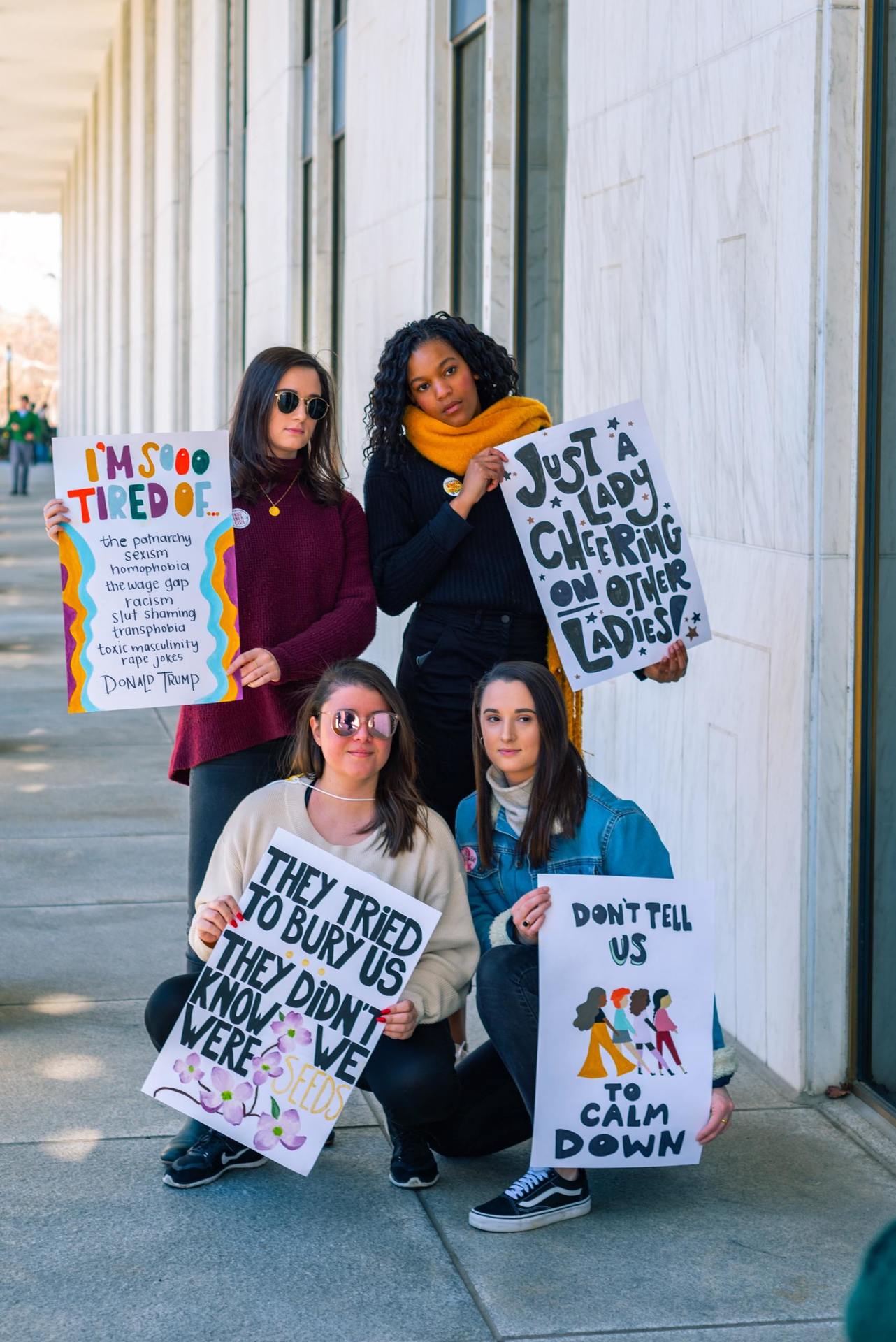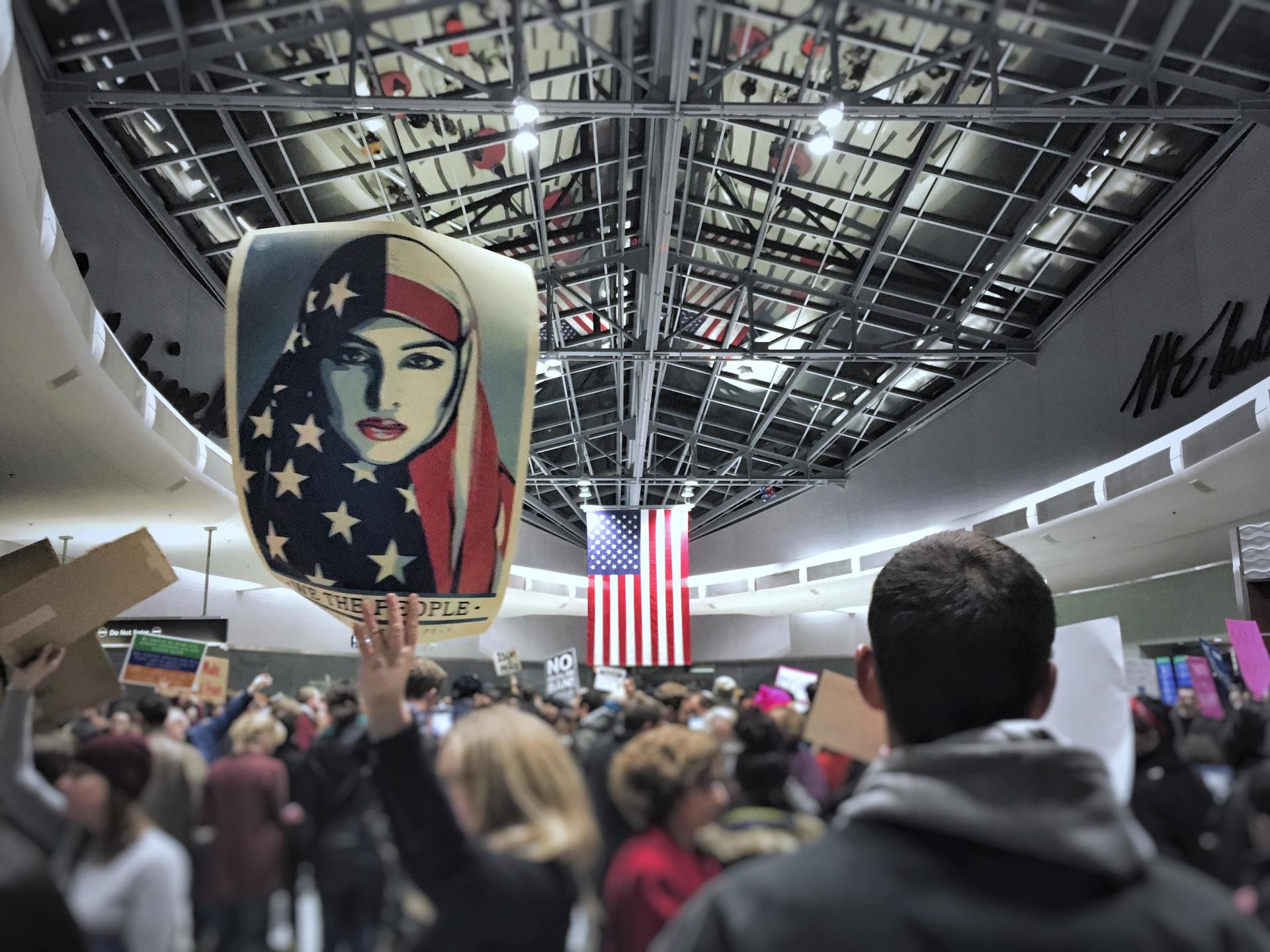Women Inspiring Change
 Photo by Miguel Bruna
Photo by Miguel Bruna
Whether it be through a whisper or a cry, women have made an impact on our country
By Sue Sweeney
Women empowerment is often viewed as a relatively recent phenomenon. With high profile movements like equal pay for equal work and #MeToo, some may think that women are just beginning to find their voice. The truth is women have been making an impact on our country since its inception. At times, a mere murmur influenced outcomes. Other times, change required a loud rallying cry.
From women being included in the 1790 United States Census to the passage of the 19th Amendment, from equal rights in the workplace to women running for political office, women have been making a difference in society.
The United States conducted the first national census in 1790. The census included white men and white women and called for the counting of three-fifths of all enslaved people. Kinzey McLaren-Czerr, a student in Dr. Andrew Schocket’s American Revolution class, asked whether including white women in the census made a difference. Despite Schocket’s confident answer of “no,” it turns out that it did make a difference. Even more surprising was that after two centuries of historical research and study, it appears that no one else had thought to ask that question.
Schocket, director of American culture studies and professor of history at BGSU, and undergraduate students McLaren-Czerr and Colin Spicer discovered that the inclusion of free white women and children in the census tilted the balance in the House of Representatives slightly in favor of the northern states, which had fewer enslaved people than the southern states. It also tilted the balance of power in the Electoral College toward the North.
It's ironic that women, who at that time in our country’s history could not vote or own property, affected state representation in our federal government. Of course, this impact was made passively, with no action or acknowledgement. Conversely, women’s suffrage required collective, direct action.
In the battle for women’s suffrage, as with other movements, women used their passion and persistence to instigate change — even when that change required years, or even decades, to accomplish.
 Photo by Peyton Sickles
Photo by Peyton Sickles
Dr. Lori Liggett, a teaching professor in the BGSU School of Media and Communication, explained that the women’s suffrage movement grew out of the abolitionist movement. Both men and women were involved in the abolitionist movement, which brought women out into the public sphere – the world of business, politics and government.
One might think that the women’s suffrage movement was something that all women would support, but much like today’s #MeToo movement, there were different opinions on how the movement should advance.
“At that time, a woman’s place was considered to be in the private sphere,” Liggett said. “The private sphere consisted of the family, home and church. Women were viewed as the moral compass.”
Some early organizers of the women’s suffrage movement were considered too radical, while others were seen as too conservative.
Factions developed in women’s suffrage after the passage of the 15th Amendment, which stated that United States citizens could not be denied the right to vote “on account of race, color, or previous condition of servitude.”
Employing different tactical strategies, women’s groups across the country organized and encouraged the ratification of the 19th Amendment, which required the approval of 36 states. On August 18, 1920, Tennessee became the thirty-sixth state to issue its approval and women were granted the right to vote — 72 years after the 19th Amendment was first introduced.
Earning the right to vote is just one of many things that women have fought for since the founding of our country. The Equal Rights Amendment (ERA) guarantees equal rights for all American citizens regardless of sex in matters of divorce, property, employment, and other situations. It has been almost 100 years since the ERA was introduced to Congress in 1923. Whether it will be adopted as the 28th Amendment to the Constitution is yet to be seen.
Constitutional amendment or not, women persist in the fight for equal rights in our society. In the workplace, women continue to lead the charge for fair hiring practices, inclusive health benefits, and equal pay. Eileen O’Neill ’90, Master of Arts in popular culture graduate from BGSU and former global group president of Discovery Studios, discussed how women’s roles in the workplace have changed over the past 30 years.
According to O’Neill, women were not as prevalent in the media field as they are now and their roles were often limited to certain areas.
“There were two factors that made my company unique,” she said. “There was executive female leadership at the top position and in human resources.”
Brenda Hollis ’68, retired United States Air Force colonel and 20-year veteran, former Peace Corps volunteer, and lawyer who served as an expert counsel and lead prosecutor in several high-profile international cases, said that she has observed the imbalance of opportunities for women, particularly for women from poor backgrounds.
“I think early on I appreciated the injustices that were there, the courage of some people to change them, and the resistance of others who benefitted from those injustices,” Hollis said. “And because I was female, I was subjected to a number of those injustices in an indirect way. My opportunities were, in many ways, very limited and expectations of me were very traditional, and I always rebelled against that.”
Thirty and forty years ago, the expectation for young women was to go to college, work a few years, and then get married and have a family. Examples of women in workplace leadership positions to serve as role models or mentors for young girls were scarce.
Oftentimes, businesswomen viewed other women in the marketplace as their biggest threat. As O’Neill explained, “Think about it – if the company was open to developing women, it wouldn’t have been many. So your competition tended to be other women instead of the entire strength of that particular workforce.”
Instead of supporting each other, women were somewhat pitted against each other. This is something that seems to have changed with mentorships on the rise for women to help other women.
“I’m in awe of the women today in their 70s and even 80s who hold public office or are anchors on cable news shows or are now leading executives or physicians at major hospitals,” O’Neill said. “Those women had it very tough. They were the ones in classrooms with maybe one or two other women. They were the ones who created families with little to no support from human resources. I’ve stood on their shoulders and thank them.”
Some of the women pioneers in politics and industry are little more than a footnote in the history books. Others remain nameless and faceless, but their contributions to society cannot be overlooked.
 Photo by Tim Viola
Photo by Tim Viola
Victoria Woodhull was trying to break through the glass ceiling in the political world long before Hillary Rodham Clinton, Sarah Palin, Elizabeth Warren, or Amy Klobuchar. Dubbed “Mrs. Satan” by her detractors, Woodhull ran for president of the United States in 1872.
As a leader of the women’s suffrage movement, Woodhull declared, “If Congress refuse [sic] to listen to and grant what women ask, there is but one course left then to pursue. What is there left for women to do but to become the mothers of the future government?”
Motherhood and politics was the topic explored by Dr. Melissa Miller, associate professor of political science, for her “Moms on the Run” research fellowship funded by the Institute for the Study of Culture and Society (ICS) at BGSU. Miller conducted a close-up qualitative study of 17 mothers of young children who were first-time candidates running for Congress in 2018. This small, very diverse group of women represented different races, ethnicities, and sexual orientation.
Unlike their male counterparts, women candidates were often asked who was taking care of their kids while they were on the campaign trail. The question illustrates the double standard that persists for women trying to balance careers and parenthood. The perception that a woman’s place is in the home, not in the public sphere, still exists.
For the candidates in this study, home and family played a large role in why they decided to run for office and how they orchestrated their campaigns. Several candidates told Miller that being a mother was their impetus for running. They wanted to make the world a better place for their children.
These women did not view having children as a barrier to running. They were already accustomed to juggling families and careers, but they learned that, as Miller puts it, “campaign time conflicts with mommy time.”
Since campaign events often take place in the evenings and on weekends, if these candidates wanted to see their kids, they had to bring them on the campaign trail with them. Miller found that, for the most part, the public reacted positively to this. Most voters felt that it made the candidates more relatable, and even an inspiration.
Women inspiring change — in the workplace, in politics, and in everyday life — will continue, whether it be through a whisper or a cry.
As Abigail Adams wrote to her husband, John Adams, during the 1776 Continental Congress, “I long to hear that you have declared an independency. And, by the way, in the new code of laws which I suppose it will be necessary for you to make, I desire you would remember the ladies and be more generous and favorable to them than your ancestors. … If particular care and attention is not paid to the ladies, we are determined to foment a rebellion, and will not hold ourselves bound by any laws in which we have no voice or representation.”
Updated: 07/18/2020 09:25AM
